#Indigenous Natives of The Americas
Text
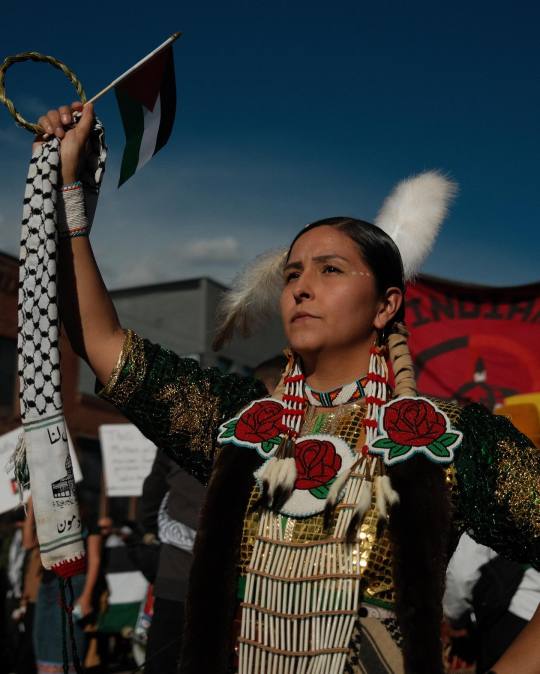

Native Americans march in solidarity with Palestine
Denver, Colorado USA
© Malek Asfeer
#Photography#People#Native American#Indigenous#USA#Palestine#Palestinian#Arab#America#American#Dener#Colorado#Folk dress
21K notes
·
View notes
Text
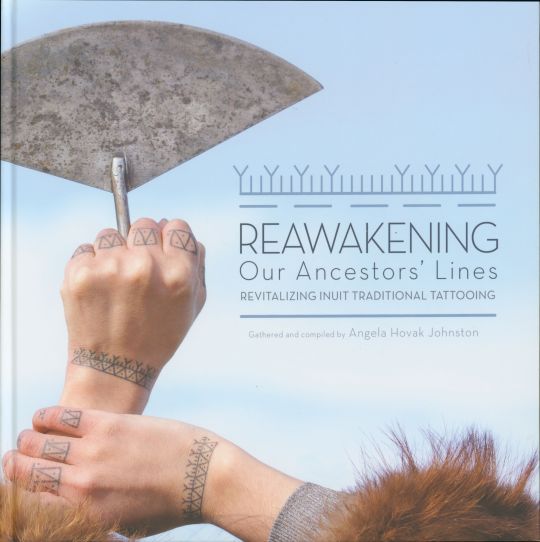

The author, Angela Hovak Johnston.

Johnston and Marjorie Tungwenuk Tahbone, traditional tattoo artist.
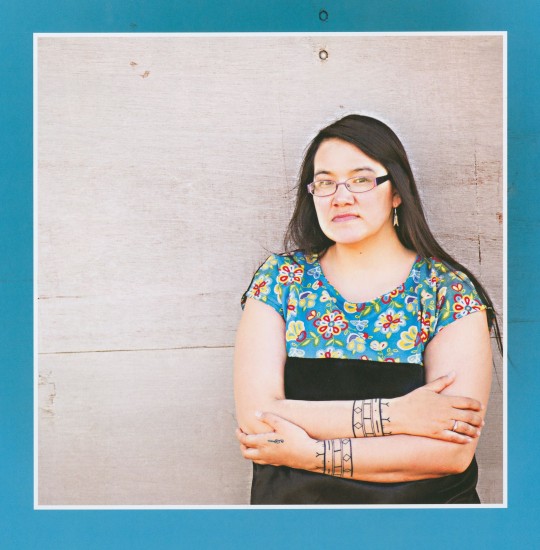
Catherine Niptanatiak: "I designed my own, something that represents me and who I am, something that I would be proud to wear and show off, and something that would make me feel confident and beautiful. . . . I have daughters and I would like to teach them what I know. I would like for them to want to practice our traditions and keep our culture alive."
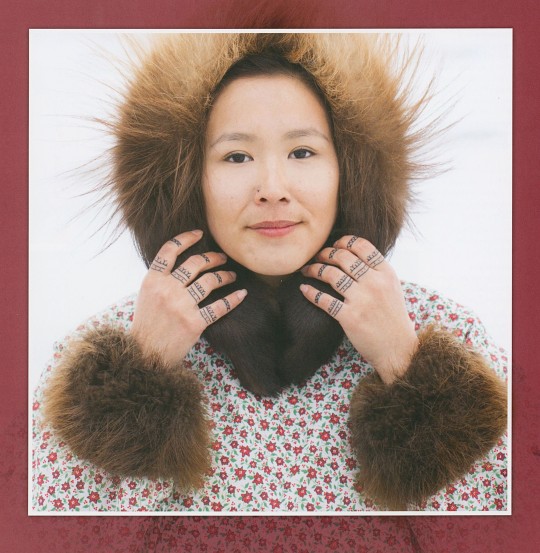
Cecile Nelvana Lyall: "On my hand tattoos, from the top down, the triangles represent the mountains. . . . The Ys are the tools used in seal hunting. . . . The dots are my ancestors. . . . I am so excited to be able to truly call myself and Inuk woman."
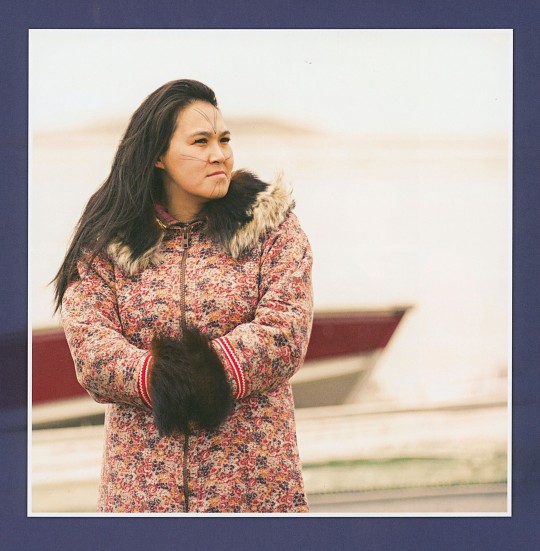
Colleen Nivingalok: "The tattoos on my face represent my family and me. The lines on my chin are my four children -- my two older boys on the outside protecting my daughters. The lines on my cheeks represent the two boys and the two girls on either side. The one on my forehead represents their father and me. Together, we live for our children."
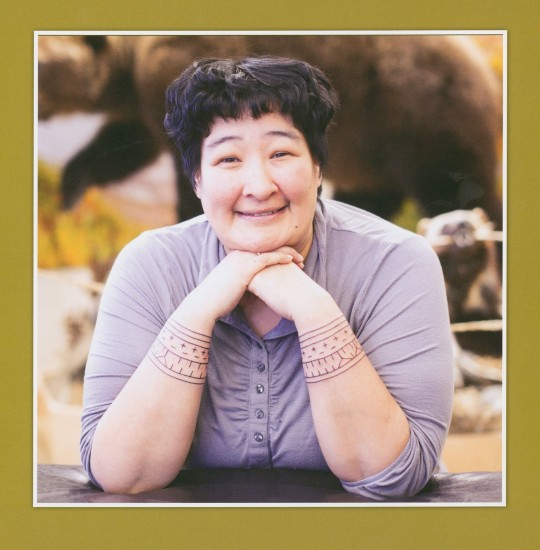
Doreen Ayalikyoak Evyagotailak: "I have thought about getting traditional tattoos since I was a teenager. . . . When I asked the elders if I could have my own meaning for my tattoos, they said it wouldn't matter. My tattoos symbolize my kids."
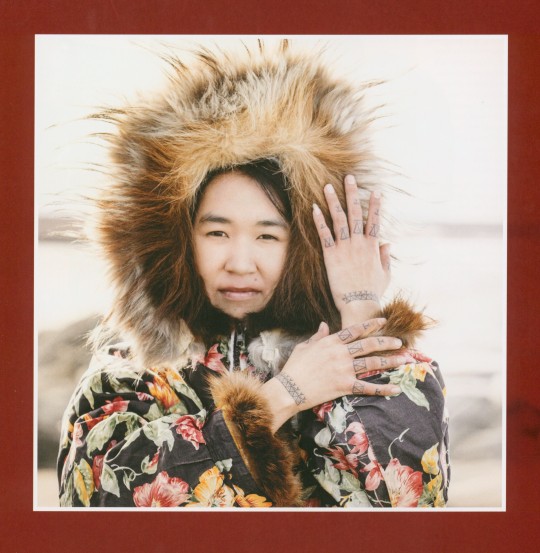
Mary Angele Takletok: "I always wanted traditional tattoos like the women in the old days. I wanted them on my wrists and my fingers so I could show I'm Inuk."

Melissa MacDonald Hinanik: "As a part of celebrating my heritage and revitalizing important traditional customs that form my identity, I believe I have earned my tattoos. I am a beautiful, strong young woman. I am a mother, a wife, a daughter, a friend, and an active community member. I reclaim the traditional customs as mine, I re-own them as a part of who I am."
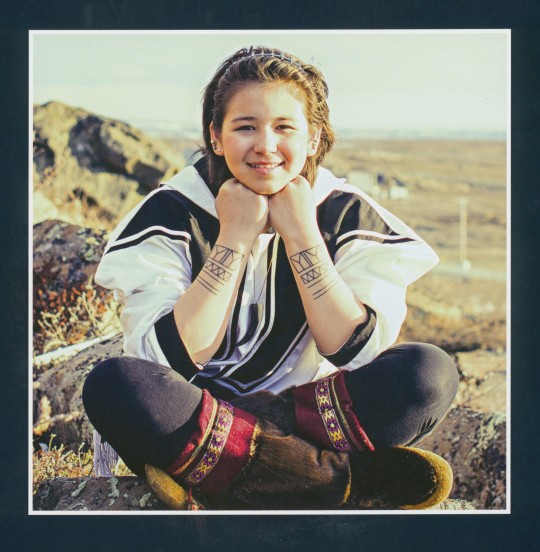
Star Westwood: "We still have some of our culture, but some things are slowly dying. Having tattoos helps us keep our culture alive. . . . . My tattoos represent my dad and my dad's dad. The ones closest to my wrists represent my sisters."
------------------------------------------------------------------------------
National Tattoo Day
July 17 is National Tattoo Day. To celebrate, we present some images from Reawakening Our Ancestors' Lines: Revitalizing Inuit Traditional Tattooing, compiled by Angela Hovak Johnston, co-founder with Marjorie Tahbone of the Inuit Tattoo Revitalization Project, with photographs by Inuit photographer Cora DeVos, and published in Iqaluit, Nunavut by Inhabit Media Inc. in 2017.
For thousands of years, Inuit have practiced the traditional art of tattooing. Created the ancient way, with bone needles and caribou sinew soaked in seal oil, sod, or soot, these tattoos were an important tradition for many Inuit women, symbols etched on their skin that connected them to their families and communities. But with the rise of missionaries and residential schools in the North, the tradition of tattooing was almost lost. In 2005, when Angela Hovak Johnston heard that the last Inuk woman tattooed in the old way had died, she set out to tattoo herself in tribute to this ancient custom and learn how to tattoo others. What was at first a personal quest became a project to bring the art of traditional tattooing back to Inuit women across Nunavut.
Collected in this book are photos and stories from more than two dozen women who participated in Johnston's project. Together, these women have united to bring to life an ancient tradition, reawakening their ancestors' lines and sharing this knowledge with future generations. Hovak Johnston writes: "Never again will these Inuit traditions be close to extinction, or only a part of history you read about in books. This is my mission."
Reawakening Our Ancestors' Lines forms part of our Indigenous America Literature Collection.
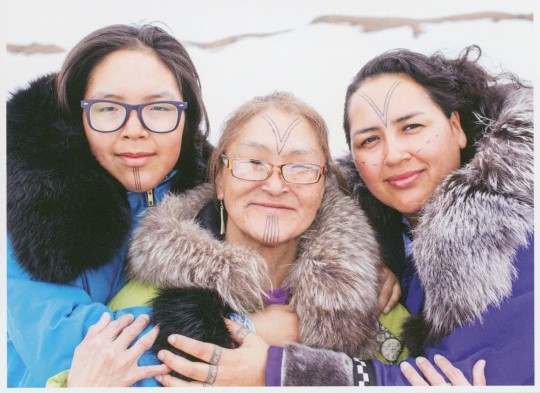
Angela Hovak Johnston (right) with her cousin Janelle Angulalik and her aunt Millie Navalik Angulalik.
View other posts from our Indigenous America Literature Collection.
#National Tattoo Day#tattoos#holidays#Inuit traditional tattoos#Inuit tattoos#Inuit#Inuk#Reawakening Our Ancestors' Lines#Angela Hovak Johnston#Cora DeVos#Cora Kavyaktok#Marjorie Tahbone#Inuit Tattoo Revitalization Project#Inhabit Media Inc.#photographs#Inuit women#Indigenous America Literature Collection#Native American Literature Collection
2K notes
·
View notes
Text

This is the kind of free thinking Fascists want to crush.
#history#native american#indigenous#antiauthoritarian#antinazi#anti capitalism#earth#america#australia#australian#amerika#americans#class war#classwar#ausgov#politas#auspol#tasgov#taspol#neoliberal capitalism#fuck neoliberals#anthony albanese#albanese government#antifascist#antifaschistische aktion#anti imperialism#anticapitalista#anti capitalist love notes#eat the rich#anarchy
9K notes
·
View notes
Text
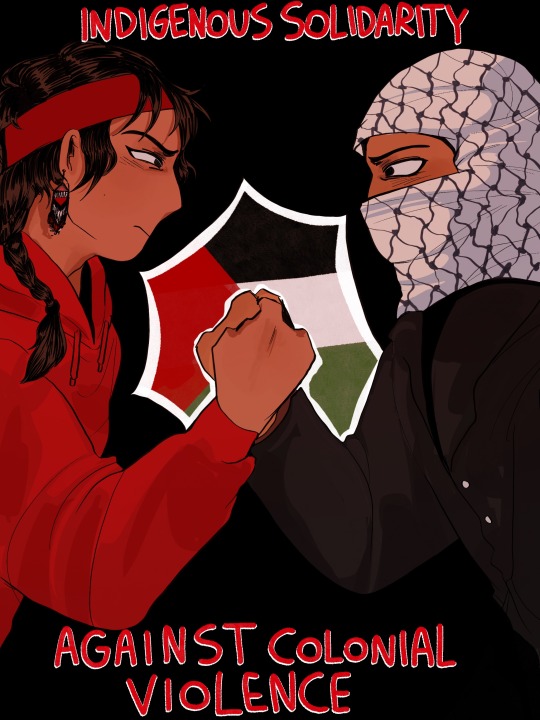
landback everywhere
#free palestine#palestine#ndn#indigenous artist#indigenous solidarity#death to israel#death to america#free gaza#indigenous rights#As a native if you are a native and not supporting Palestine then you are no better than the white man#I mean that#Look your ancestors in the eye and tell them you support a colonial genocide
2K notes
·
View notes
Text
And we wouldn’t have to pay to see ourselves in museums.
Source
#indigenous#native#land back#first nations#native people#native american#mesoamerica#indigena#native america#turtle island#ndn tumblr#1492#ndn#n8v#ndn tag#decolonize#videos
714 notes
·
View notes
Text
gotta say, theres something really weird about how online queer spaces pretend that intersex people dont exist. even american queer rights orgs seem to ignore us. and then i see kiwi sites on queer communities and theres comparatively a lot of intersex stuff. i go to a local nurses office and intersex people are included in a pamphlet on representation in books. every queer rights org has a link to to sites for intersex rights. am i crazy or is america falling behind? its quite... concerning
#intersex#queer#in the same train of thought#american media is strangely devoid of indigenous representation#for most of my life#the majority of media i have engaged in#is american#yet i didnt find any native american characters outside westerns#until i read heros of olympus#Piper is the only native american character ive ever seen#outside media set in the 1800s#compare that to media in aotearoa#where theres hakas on tv#just because thats part of aotearoa#not trying to brag#but america is falling behind
558 notes
·
View notes
Text
Have you heard of the American Indian Movement? Did you know natives had a movement/group in the 70's-80's dedicated to native liberation?
No? It's a part of history they don't teach you in school, but come close and look so I can show you.
Watch this, it's not long I promise. This is Russel Means, a prominent native activists and one of the leaders of AIM. AIM sought to help natives with things like tribal sovereignty, housing, healthcare, and food security.
Here he is testifying to the US government.
youtube
The transcript ^
A little excerpt of the end:
"The American Indian people’s right to self-determination is recognized and will be implemented through the following policies:
The American Indian individual shall have the right to choose his or her citizenship and the American Indian nations have the right to choose their level of citizenship and autonomy up to absolute independence;
The American Indian will have their just property rights restored which include rights of easement, access, hunting, fishing, prayer, and water;
The BIA will be abolished with the American Indian tribal members deciding the extent and nature of their governments, if any;
Negotiations will be undertaken to exchange otherwise unclaimed and un-owned federal property for any and all government obligations to the American Indian nations, and to fully -- and to hold fully liable those responsible for any and all damages which have resulted from the resource development on or near our reservation lands including the -- including damages done by careless and inexcusable disposal of uranium mill tailings and other mineral and toxic wastes.
I want to thank you, gentlemen, for inviting me here. It's been a high honor, especially since I'm the only one invited here today to testify that doesn't receive money from the federal government. Also, I want to make -- I was introduced as a former founder and leader of American Indian movement to the tribal chairwoman that you have here, a former associates for the American Indian Movement back in the days when we were gross militants and so I just wanted to let you in on that, that the American Indian Movement is a very proud continuing part of American Indian Society.
Thank you."
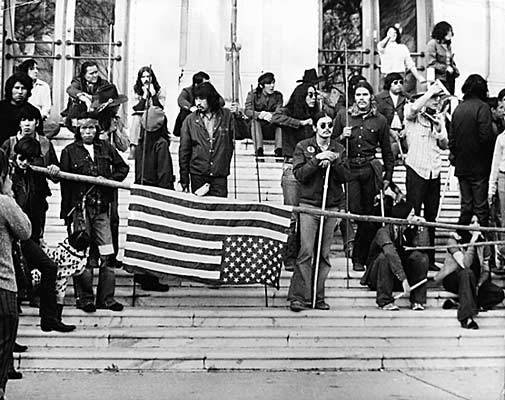



"The American Indian Movement remains based in Minneapolis with several branches nationwide. The organization prides itself on fighting for the rights of Native peoples outlined in treaties and helping to preserve indigenous traditions and spiritual practices. The organization also has fought for the interests of aboriginal peoples in Canada, Latin America and worldwide. “At the heart of AIM is deep spirituality and a belief in the connectedness of all Indian people,” the group states on its website."
#AIM#American indian movement#usa#politics#native sovereignty#tribal sovereignty#native rights#treaty rights#human rights#russel means#dennis banks#leonard peltier#native america#native#indigenous#ndn#BIA#bureau of indian affairs#colonialism#settler#settler colonialism#usamerican#liberals#progressives#leftist#ogala lakota#native pride#american history#native history#lakota history
1K notes
·
View notes
Text
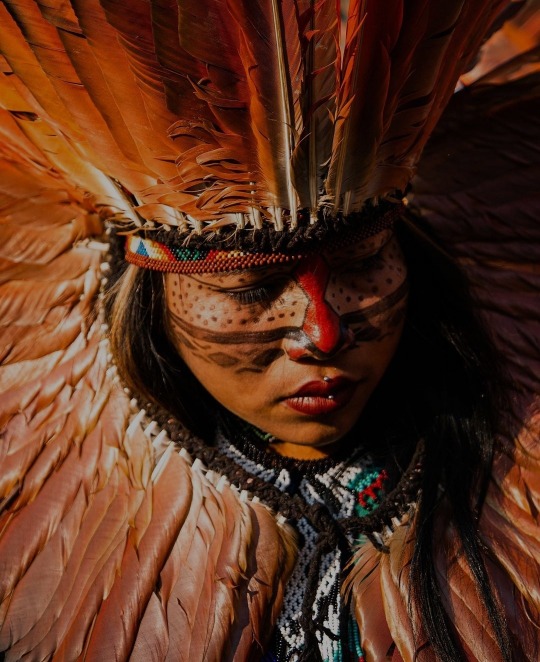
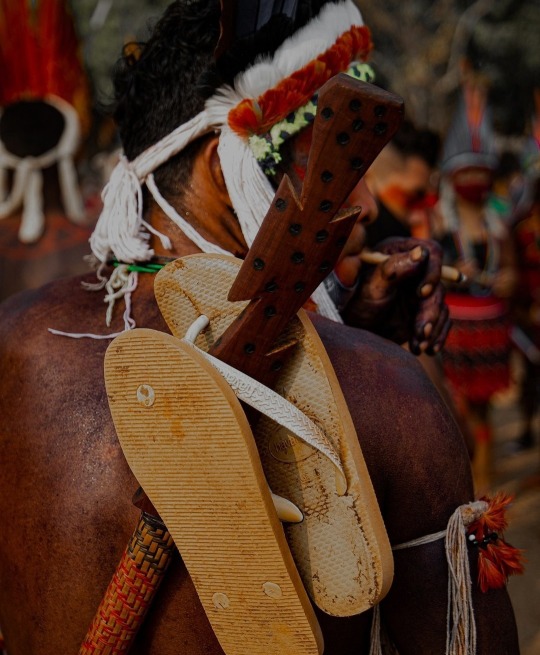






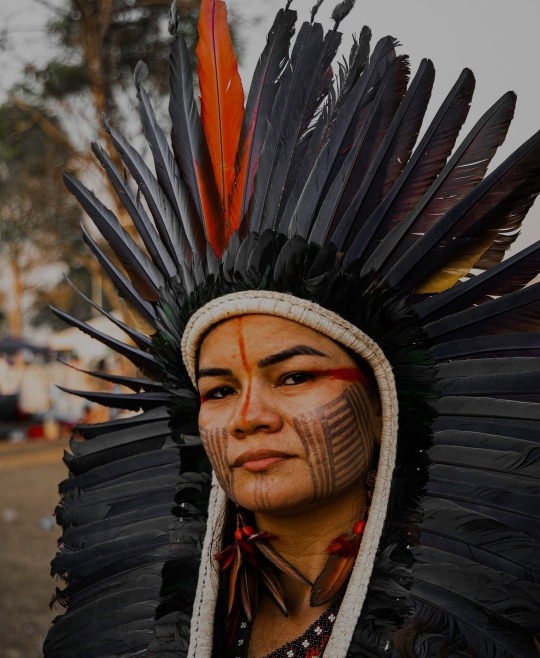

Marcha das Mulheres Indígenas, Brasília, 2021 🏹
#brasil#brazil#photography#women#indigenous issues#indigenous women#indigenous rights#indigenous people#indigenous#native women#native american#first nations#latin america#america latina#latinoamerica#meus posts
9K notes
·
View notes
Text
It's important to recognise that what's happening in Palestine, what we are witnessing and what people are experiencing, are not isolated to Palestine.
You may hear people talk about the war in Sudan, the silent holocaust in Congo.
It's because these and so many more atrocities in the world are linked. They are preperuated by the same systems.
[Video Transcript:
So as a Palestinian when I say Free Palestine, I am not just talking about Palestine. I started nursing school in 2015 at Saint Louis, just a few miles away from where Michael Brown was killed by police.
Being in that city at that time, watching Black Lives Matter being born, stirred up a lot of feelings for me as a Palestinian.
I saw a country justifying a child being murdered by the state, in the street. I saw the people protesting that murder being vilified.
Standing there, protesting, watching a militarised police force with tear gas and rubber bullets matching towards me.
And I thought, this is that.
As a Palestinian to understand what is going on in Palestine is to understand the de facto aphartied that black Americans experience here in the states.
It's not an accident that when my grandfather came here, he was told to sit and the back of the bus. And it's not an accident that he marched with MLK.
It has been black and Palestinian solidarity, and it continues to be black and Palestinian solidarity.
Because yes, Free Palestine is about Palestine ceasefire now and the military occupation of the Palestinian people. It's also about resisting the global colonial hegemonic structure.
Because the shit happening there is happening here. If it isn't Palestinian women and babies being killed by bombs in Gaza, it's black women and babies being killed in American hospitals.
If its not Palestinian girls missing in the rubble. It is missing and murdered indigenous women here in the United States.
The rage I feel when I hear the names Michael Brown and Treyvon Martin is the same rage I feel when I hear the names Shireen Abu Akleh and Ahmad Manasra.
That's not to say that allyship is transactional, it is to say that the only thing we have is each other.
There's a reason that when people ask me about Free Palestine, I will point them to books on Black Lives matter.
When I say Free Palestine, yes I mean Free Palestine but I also mean Black Lives Matter, I also mean abolition now. I also mean reparations, I also mean land back.
This movement cannot lose steam, not just because there is currently a genocide being perpetuated against my people. And every minute we don't do something Palestinian lives are being lost.
But because this is a global struggle for justice. It does not start and end with Palestine, we will not be free until all of us are free.
The world is waking up, there has never been global solidarity for Palestine like this.
And we have them so scared. The violence is so disproportional because we are challenging a global power structure. Don't let the momentum die because this is about all of us.
Ceasefire now.
End the occupation.
But know what I mean when I say, Free Palestine.
End Transcript.]
Books shown in the video:
"When they call you a terrorist a black lives matter memoir" by Patrisse Khan-Cullors & asha bandele.
"Freedom is a constant struggle. Ferguson, Palestine and the foundations of a movement" by Angela Y. Davis
#free palestine#free gaza#black lives matter#usa#us#america#indigenous people#native american#free sudan#free congo#blm#human rights
1K notes
·
View notes
Text
Okay here's my spicy take:
It's really convenient for white westerners, especially Americans, to have the stance that being indigenous expires a certain time after colonization and I think that stance isn't pushed back against nearly often enough. And to go a step further I think the take is itself a subtle act of colonization
#like if we apply the logic they use for Jew to north america#then there will come a time the Lakota or Dine will not be indigenous#but Caucasian Jeff from chicago will be#like dont get me wrong i see how people call it out for antisemitism which it is#but its also testing the waters to further invalidate native north american indigenous rights#and i think that needs to be acknowledged more often
285 notes
·
View notes
Text
What is NIBSDA?
NIBSDA was conceptualized to serve as a national digital platform and digital repository for boarding school archival collections throughout the United States.
As part of truth-telling, access to boarding school records for survivors and descendants is paramount to understanding this history and its consequences on Tribal Nations.
Through cultivating historical insights, NIBSDA supports community-led healing initiatives throughout American Indian and Alaska Native Nations towards restored Indigenous cultural sovereignty.
⚠ In negotiating these pursuits, you may encounter content that can trigger secondary trauma or Post Traumatic Stress Disorder (PTSD); we encourage individuals to prepare themselves prior to engaging with these collections and to seek counseling or healing if you experience any stress related to boarding school history.
Indigenous peoples are warned that NIBSDA may lead to other external resources that contain images, names, and references to deceased persons. For more information, please see Content Warning. ⚠
#a friend of mine let me know this existed and i wanted to share with anyone who it might be relevant to here#indigenous#native american#ndn#boarding schools#residential schools#archives#american history#usa#united states of america#united states#indigenous peoples#indigenous history#indigenous issues#indigenous people#native americans#first nations#indigenous rights
137 notes
·
View notes
Photo

Native American ancestry according to 23andMe
117 notes
·
View notes
Text
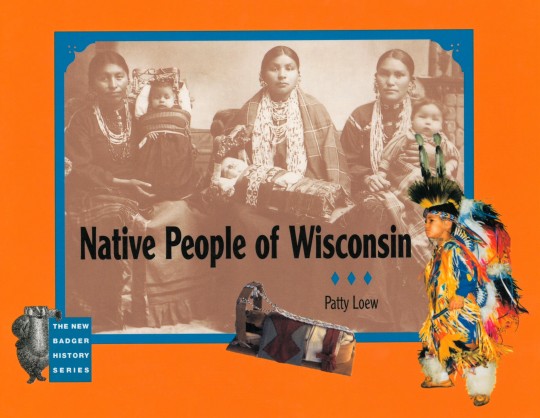
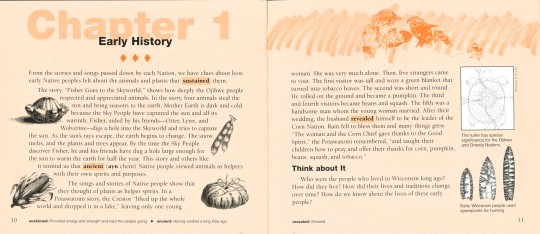

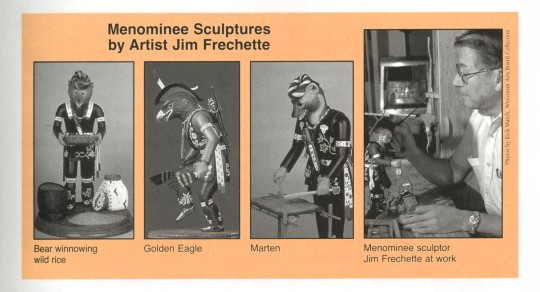
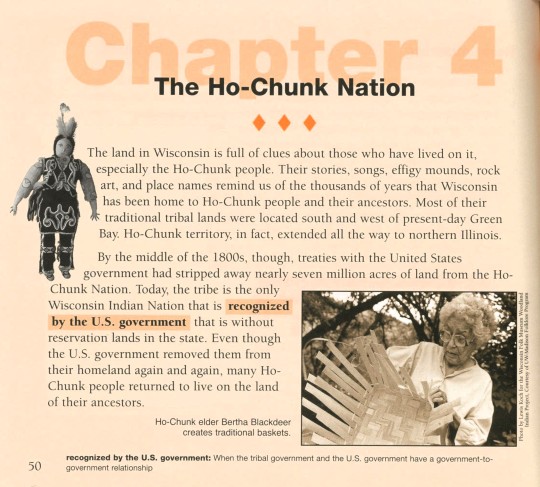
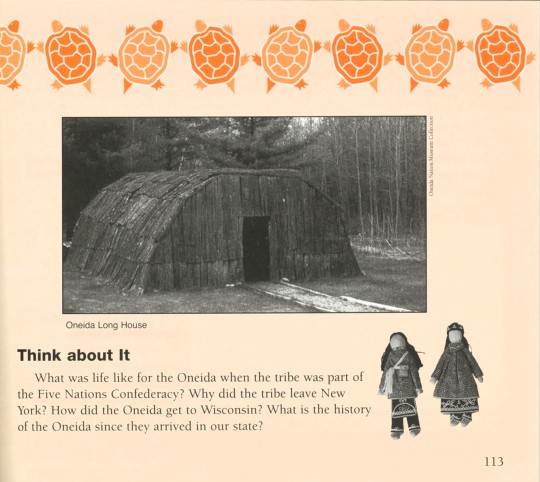
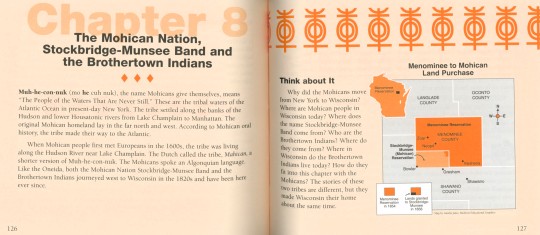

Native Wisconsin
Native People of Wisconsin by Ojibwe scholar and journalist Patty Loew (b.1952), published in 2003 by the Wisconsin Historical Society Press in Madison, Wisconsin, is a book for young readers about the twelve Indian Nations that live in Wisconsin, including my tribe, the Stockbridge-Munsee Band of Mohicans. The book also includes the history of the First People in Wisconsin and the impact of European arrivals on Native culture.
Patty Loew, a Wisconsinite and member of the Bad River Band of the Lake Superior Ojibwe tribe, is a journalist, professor, author, community historian, broadcaster, documentary filmmaker, academic, and advocate. This children's book is a testament to her work, showcasing tribal narratives that encompass different methods through which Indigenous communities preserve their history. With a particular emphasis on oral tradition, this work is a valuable resource for educators and individuals interested in Native American history and will surely captivate young readers.
View other posts from our Native American Literature Collection.
View more from our Historical Curriculum Collection.
-Melissa (Stockbridge-Munsee), Special Collections Graduate Intern
#native people of wisconsin#patty loew#children's books#wisconsin indians#native americans#wisconsin historical society press#indigenous#oral traditions#native american history#native history#native american literature#indigenous peoples#indigenous america literature collection#historical curriculum collection
87 notes
·
View notes
Text
Smithsonian returns woman’s brain to family 90 years after it was taken - The Washington Post
https://www.washingtonpost.com/investigations/2023/09/08/smithsonian-returns-brain-taken/
An 18 year old indigenous Alaskan woman's (Mary Sara) brain was removed (stolen) from her body without her consent, her family did not consent, no one knew about this, and was sent to the Smithsonian all because a racist physician wanted to add the brain to his collection that "proved" white superiority. File this under one of the many reasons why I don't care that white people get their feelings hurt when I say I don't trust white people.
I'm glad that Mary's brain has been reunited with the rest of her body. I'm happy that her family got to give her a ceremony. This never should have happened in the first place though.
517 notes
·
View notes
Text
Please reblog for a bigger sample size!
If you have curiosities or facts about Canada you'd like to share, tell us and we'll reblog it!
#canada#country polls#polls#i debated myself on whether to add genocide here#so if you are native canadian and thinks this triviliazes it/shouldn't be in the poll#please contact me and i will delete it#if you're canadian but not indigenous i dont think you have a say here#north america
297 notes
·
View notes
Video
undefined
tumblr
Cultivated North America
#tiktok#north america#land back#indigenous#native grass lands#grasslands#colonization#colonialism#conservation
2K notes
·
View notes